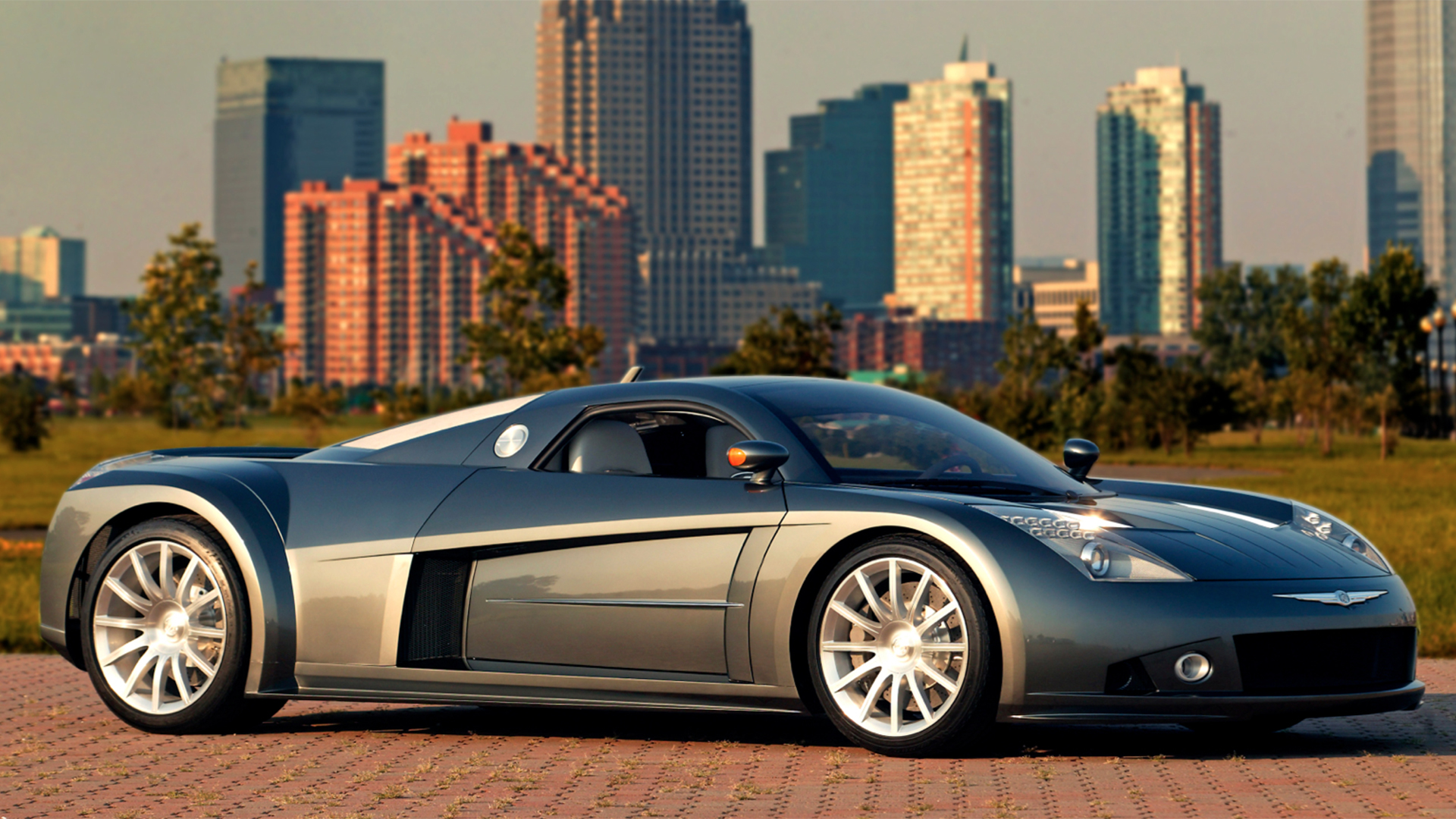

Chrysler makes two cars now. That’s not a typo—despite its lofty perch in FCA’s full name, you’ve got the Chrysler badge on the Pacifica minivan and the 300 sedan. The speed of its decline has been something to behold. Think back to 2004, when it made seven different models. Actually, it was eight, if you count one of the best American concept cars to ever make it to the fully drivable prototype stage.
We’ve waxed poetic about the LX cars, but really the 2004 Chrysler ME Four-Twelve was the best thing to come out of its doomed 1998 merger with Daimler. The largest cross-border deal in history at the time at $38 billion dollars all added up to the Chrysler Crossfire. Man. But at the same time that thing was hitting the roads, the automaker was secretly testing out a Chrysler-badged supercar prototype with a mid-mounted, quad-turbo AMG V12 making 850 horsepower that could send it to 60 mph in 2.85 seconds and make a run at 250 mph.

Not just sketching it, or building a buck. A crack team of engineers really built a running, driving, essentially pre-production model of the American world beater that never was. There were actual plans for production drawn up, more than fifteen years before Chevrolet finally moved forward with the mid-engine C8 Corvette. That Chrysler’s effort came so close makes it all the more tragicomic.
See, Chrysler’s COO Wolfgang Bernhard was on a mission to impress. At the previous North American International Auto Show in 2003, his team had unveiled Dodge’s famous Viper V10-powered motorcycle, the Tomahawk. This new show-stopper would have to be, in Bernhard’s words, “exciting, motivational, and inspirational” something, “completely unexpected from Chrysler,” and an engineering feat. His people delivered.






The ME Four-Twelve, named for, you guessed it, the four turbochargers and twelve cylinders, was a supercar in every sense of the word. That AMG-sourced, 6.0-liter aluminum V12 was improved with forged internals and a new cylinder head to better handle the stresses at work. It was connected to a crazy-quick seven-speed Ricardo dual-clutch transmission with 200-millisecond shift times, which powered the rear wheels and their 335-millimeter-wide tires, visible through gaping vents in the rear.
Handling? Consider it handled by aluminum control arms and horizontally-opposed coilovers in the front and double wishbones in the rear suspension setups. Although six-piston calipers gripped 16 inch discs at the front, there wasn’t much car to yank to a halt. Thanks to a carbon-fiber and aluminum honeycomb tub, the ME Four-Twelve weighed only 2,888 pounds.
Motor Trend drove it around Laguna Seca in 2004—it was decidedly unfinished, down on power and dealing with transmission hiccups, but it worked. And it was fast.

Saying that this all adds up would be an understatement. If the ME Four-Twelve was put into production in 2004, it would’ve been the quickest and fastest car in the world. It would’ve trounced the Mclaren F1’s top speed by nearly ten miles-per-hour at 248. It would’ve made the Ferrari Enzo look like a has-been, beating it to 60 by two-tenths of a second. 2.9 seconds may be quick to sixty, but it’s 0-100 time of just 6.2 seconds would’ve beat Porsche’s Carrera GT as well. It would’ve had a better power-to-weight ratio than the Bugatti Veyron. From the factory, It would’ve ran a quarter mile of just 10.4 seconds.
Although the price would’ve likely been far above that of the new C8 Corvette, this car beats it in nearly every metric. I don’t think It would be a stretch to say this car looks better, either. Any car with a helluva lot of visible rear tire typically does not mess around.

Unfortunately for us, it was not to be. Internal cost estimates at Daimer-Chrysler presented a harsh reality for the planned production of just a few hundred per year. Hundreds of millions of dollars would be needed to develop the vehicle for production. Furthermore, the Mopar enthusiast site Allpar holds that the ME Four-Twelve would’ve been faster and cheaper to produce than Mercedes’ own SLR McLaren. Chrysler’s German owners apparently weren’t ready for an American car to step on the toes of their hometown hero, as that story goes.
Whatever happened, the ME Four-Twelve didn’t. All we can do now is stare at the prototype, and remind ourselves that Fiat also owns Ferrari. Perhaps there’s a distant hope that Chrysler will make not two, but three cars in the future.
Got a tip? Send us a note: tips@thedrive.com